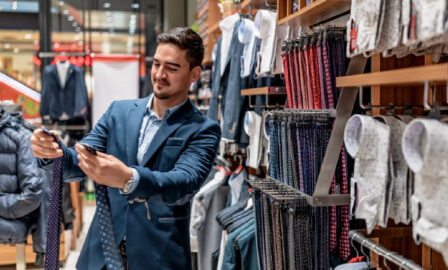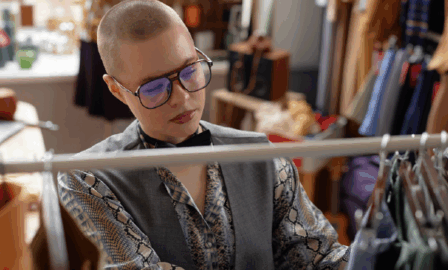How Luxury Retailers Are Evolving to Meet the Needs of the Conscious Consumer
Luxury retailers have encountered major setbacks due to notable shifts in the global economy. Economic headwinds, among several other external influences, have transformed consumer preferences and purchasing behaviors in this market. To ensure they’re staying well-aligned with their target audience moving forward, luxury retailers are testing new approaches to maintain relevancy, such as sustainability initiatives or partnerships with reCommerce platforms. This is opening more doors to the secondhand market, an emerging space that challenges brands to balance inclusivity with luxury.
Below, we will explore how traditional values for the luxury market, like craftsmanship and prestige, now coexist with contemporary priorities for environmental sustainability. To maintain their established brand reputation, luxury retailers must appeal to a more conscious audience and find innovative ways to keep those consumers invested in their brand in the future. Below, we unpack how luxury retailers are evolving.
Current Economic Landscape & Impact on Luxury Consumption
Since 2024, the state of the global economy has posed a natural threat to luxury retailers. With both inflation and interest rates on the rise, shoppers are consequently less keen to pay a premium for luxury or non-essential goods. Not to mention, ongoing geopolitical tensions have created an environment of uncertainty for both shoppers and retailers.
Slowdowns in key markets like China and South Korea, coupled with only modest improvements in the domestic market, reflect how these broader influences impact the luxury retail sector on a global scale. Following the luxury market’s growth surge in 2021-2022, its stagnant performance today is that much more significant.
For discretionary spending categories like luxury goods, economic pressures have a significant influence on consumer spending habits. Typically, as cost-of-living increases, most consumers will feel less inclined to spend more on non-essential goods.
High-end brands like Chanel, Hermès, and Louis Vuitton have actually raised prices in response to preserve exclusivity and counteract their shrinking sales volume. And with today’s unpredictable geopolitical environment, the process of receiving luxury goods from Europe may become more costly and complex altogether. These factors can impact who can access these luxury goods and how those consumers approach purchasing decisions in this space.
Beyond affordability and access, decision fatigue also contributed to slowed luxury purchasing this past year. The immense volume of products available in the oversaturated luxury market can easily overwhelm shoppers, especially since each purchase is an investment and commitment to the brand. When faced with a variety of alternatives that offer different features, price points, and perceived value, shoppers are likely to hesitate before or refrain from making luxury purchases.
Keeping these needs in mind, luxury retailers must simplify the decision-making process by establishing compelling value propositions that consider all external factors influencing the decision.
Growth of the Secondhand Luxury Retail Market
While the primary luxury retail market has struggled to retain consumer demand, the secondhand luxury market is experiencing solid growth in its place, with a predicted CAGR of 10% from 2024-2029. Valued at just under $35 B in 2023, the secondhand market is expected to almost double by 2029, reflecting a trend toward more affordable and sustainable luxury consumption.
The growth of secondhand luxury retail can be attributed to the rising demand for a circular economy, where the principles of reduce, reuse, and recycle take precedence. Consumers are drawn to the circular nature of secondhand retail to not only extend the lifecycle of luxury goods but also minimize overconsumption and product waste. Besides environmental appeal, the secondhand market provides access to exclusive, high-quality products at a much more affordable price point. The duality of both sustainability and accessibility makes the secondhand retail market especially compelling to price-sensitive shoppers seeking a high-quality, ethical alternative.
The influence of Gen Z and millennial buyers, who highly value conscious consumption, is another key driver for the secondhand market. These environmentally aware shoppers frequently turn to social media for convenient access and greater visibility into the secondhand market. Social media has made it easier to discover and purchase pre-loved goods, while also providing endless inspiration for styling these products in a personalized way. These platforms have also made it easier to hold brands accountable. Negative publicity can quickly pick up speed online, pushing luxury brands to constantly evaluate and realign with customer values.
The secondhand market’s upward trajectory emphasizes its appeal toward this eco-conscious, digitally native generation. A growing number of customers also prioritize uniqueness and exclusivity in the products they purchase. Collectors, particularly those looking for limited-edition, vintage items, are increasingly turning to secondhand markets to find pieces with a “history.”
Consumer values and shifting attitudes toward luxury retail are all contributing to the rapid growth of the secondhand market. With its projected momentum, the secondhand market has the potential to transform the luxury sector moving forward. As luxury retailers approach this transition towards sustainability, they must evolve their products and services to align with consumer preferences.
Secondhand Luxury Market Challenges
The rise of the secondhand luxury retail market, however, presents unique challenges for luxury brands to balance exclusivity, authenticity, and internal efficiency. Customer trust is of vital importance in this space, and as more counterfeit products continue to flood the market, luxury retailers must maintain transparency regarding the authenticity of secondhand products. Innovations like blockchain and AI can help monitor a product’s entire lifecycle to avoid scams, but large-scale implementations of this technology can take significant time and resources.
As secondhand sales push for more inclusiveness in this sector, it may become more challenging over time to maintain the essential prestige of the luxury value proposition. Brands must consider how to best approach the resale market and how to engage with their target customer base.
Luxury retailers can also encounter several logistical challenges in the secondhand market. Unlike a traditional supply chain, where goods move from the seller to the customer, secondhand markets begin with the customer themselves. To maintain shopper trust, retailers must implement quality control measures to intercept returns and assess quality from the start, which can also raise operational overhead costs.
Lastly, luxury retailers seeking to enter the secondhand market have to consider the supply and circulation of their pre-loved goods. Wealthy individuals own the highest share of luxury goods, yet they are never offered any sort of financial gain to sell their products. Brands must create compelling incentives, such as loyalty programs, charity donations, or exclusive promotions, to encourage participation from this customer group. Addressing these challenges will require a balanced mix of strategy, technological innovation, and operational revisions to ensure the secondhand market can maintain a sustainable advantage.
Looking Ahead
As the luxury market continues to endure this transition phase, retailers must be proactive in adapting to new preferences while maintaining their exclusivity and integrity. The rise in secondhand luxury, combined with demands for more sustainability and affordability, highlights the need for luxury retailers to find innovative strategies to keep pace with their competitors.
Our team at Clarkston can help your company develop a strategy to adapt to secondhand buying trends and keep your business aligned with your target market. Learn more about our Luxury Retail Consulting Services.
Subscribe to Clarkston's Insights
Contributions from Natalie Pollock, Bella Gordon, and Samantha Weitzel



